Our network:
Wednesday 31 December 2025
Rocca Paolina
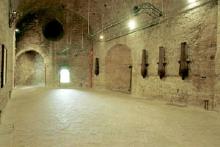 |
| Rocca Paolina |
As proof of the renewed dominion, in 1373 Albrornoz ordered a fortress to be built, the Rocca del Sole on the highest point of the town, the Colle del Sole (493 metres).
Built according to plans by Gattapone da Gubbio, the fortress was the largest and best known of its time. Nonetheless if was completely destroyed by local citizens in a uprising just three years later.
All that remains of it are the massive substructure walls that support what is now Piazza Rossi Scotti, formerly delle Prome, but usually called Porta Sole, from where there is a splendid view for 230° eastwards towards the Apennines.
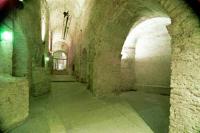 |
| Rocca Paolina |
Over a hundred houses, as well as churches and monasteries were destroyed and used as building material and as substructures for the fortress. This time the citizens of Perugia had to wait until the Roman Republic of 1848 for a first, partial demolition of the loathed symbol of papal power and finally until 1860 with the unification of Italy for its final destruction.
Externally, the only visible parts of the fortress are the substructure walls along Viale Indipendenza and the eastern bastion in Via Marzia, which incorporates the Etruscan Porta Marzia. From here it is possible to enter the foundations of the fortress, which rested on vault structures placed over the houses and streets such as Via Baglioni
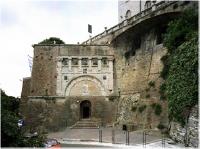 |
| Porta Marzia |
Another very atmospheric route through the fortress is along the escalators that lead from the underground parking of Piazza Partigiani, through the Rocca Paolina, under the portico of Palazzo del Governo (1870, seat of the Province), and into Piazza Italia. Here one is surrounded by buildings that were erected after the demolition of the fortress, such as the Albergo Brufani (1880), the Banca d’Italia (1871), Palazzo Cesaroni (1897, now seat of the Regional Council Hall) and the Condominio Residenziale (the first residential joint-ownership building in Perugia, 1872), both these were designed by Guglielmo Calderini, from Perugia, who also designed the Palace of Justice in Rome.
The square is completed by the already existing Albergo La Rosetta and Palazzo Donini (1716-24, seat of the Regional Council ), which contains magnificent frescoes. The statue in the middle of the public green is King Victor Emanuel II (1890).
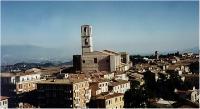 |
| Terrace-garden Carducci: view |
Behind Palazzo del Governo, from the Carducci terraced gardensbuilt on remains of the fortress, there is a magnificent view over the surrounding area.
The poet Giosuè Carducci composed his well-known poem 'Canto d’amore' here in 1877.
Rocca Paolina
Piazza Italia [old town centre]
Perugia, 06122
Info: Ph. +39 0755728440
Infopoint Perugia Città Museo:
Info-line 199 194 114
APM (Public municipal bus transport authority): stopped bus - Piazza Italia [only 50 meters away]
Linea 4, 6, 7, 9, 10, 11, 12, 13s, 13d, 15, 81, 82, 83, 87, bis28, bis33, bis34, bis41, bis44
Disabled access available
Piazza Italia [old town centre]
Perugia, 06122
Info: Ph. +39 0755728440
Infopoint Perugia Città Museo:
Info-line 199 194 114
APM (Public municipal bus transport authority): stopped bus - Piazza Italia [only 50 meters away]
Linea 4, 6, 7, 9, 10, 11, 12, 13s, 13d, 15, 81, 82, 83, 87, bis28, bis33, bis34, bis41, bis44
Disabled access available
| Have a comment or question? Send a message to our editors at: contactus@perugiaonline.com |
| Up |

General information
• General travel tips • Weather information
• Tourist guides and visit guided in Umbria
• Local opening times
• Useful - emergency numbers
• Perugia for living
• Hospital Perugia
• Hospital Foligno
• Real Estates and Home Builders
• Homes for sale, property, apartments selling
Transport in town
• Traffic restrictions • Parking
• Buses & Taxis
• Town map
• How to reach Perugia by car
• How to reach Perugia by train
• How to reach Perugia by Air
Transport out of town
• Airport • Trains
• Rent a car
• Local and national buses

Where to Stay
• Hotels Map
OFFERS & LAST MINUTE
Where to eat and drink
• Restaurants and Trattorie • Pizzerie
• Pubs
• Restaurants Map
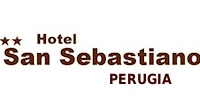
Art and monuments
• Rocca Paolina • Ipogeo dei Volumni
• Etruscan town walls
• Palazzo dei Priori
• Porta Sant' Angelo
• Acqueduct
• Maesta delle Volte
• Collegio della Mercanzia
• Collegio del Cambio
• Fontana Maggiore
Art and religion
• Cathedral of San Lorenzo • Church of San Filippo Neri
• Oratory of San Bernardino
• Church of Sant' Ercolano
• Church of San Domenico
• Church of San Pietro

Museums and galleries
• Historic Museum Perugina • Galleria Nazionale dell'Umbria
• Museo Archeologico
• Palazzo della Penna
• Accademia delle Belle Arti
• Museo di Storia Naturale
• Museo Capitolare San Lorenzo
• Cappella di San Severo
Art and tourist attractions
• Palazzo Capitano del Popolo • Botanical garden
Perugia News
Sorry, non news - i soggetti interessati a far conoscere le iniziative che avranno luogo nell'ambito del territorio comunale sono invitati a darne comunicazione con congruo anticipo utilizzando l'email redazione@umbriaonline.com
Regional News by Category
• MUSIC • EXHIBITIONS • COURSES • COMPETITIONS & PRIZES • FOLKLORE • EVENTS • DANCE & BALLET • MEETING & CONFERENCES • CONGRESS • KIDS • Typical Products FAIRS • THEATRE • SPORT EVENTS • LEISURE • LIFESTYLE • WHERE TO DINNER • NIGHTLIFE • CURIOSITY • VIDEO • BOOKS
What to see & do
• Itineraries & Museums in Umbria • Italian language courses
• The Amusement Park : La Citta della Domenica
• Golfing holidays
• Nature Walks Around Cascia:To Cascia via the Scoglio di Santa Rita, the vast rocky pyramid that dominates the village of Roccaporena
• Cooking courses
• Shopping in Perugia
• Perugia Hotel Tevere
• Assisi Villa Giulia
Lake Trasimeno
• General Information • The islands - boat tours
• Eating well by Lake Trasimene
• Bathing - Lake Trasimene
• Restaurants Map of Trasimeno area
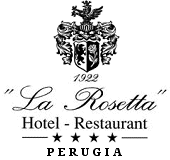
SPECIALS in Umbria - Italy
• Gift Ideas for traveling • Wellness in Umbria - Perugia area
• Weddings in Umbria
• Honeymooning in Umbria
• Charme & Relax in Umbria
• Home in Umbria
Education
• Language schools for Foreigners • Cooking schools
• University for Foreigners Perugia
• Design, Fashion, Visual arts and Communication Schools
• Perugia for Studying
• University
• Italian Army Foreign Language School
• Arts, Music, etc.

Typical products
• Norcia Ham IGP • Handicraft
• Mushrooms
• Truffles
• Extra Virgin Olive Oil
• Wine
• Meat
Flavours to taste
• Salumi Tipici Italiani online selling • Oleum Evo online selling
• Sapori Tipici Italiani buy now
• From the forest









